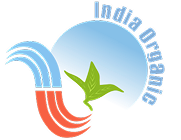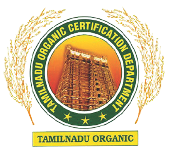Across the red soils of Tamil Nadu’s southeast coast, Auroville’s farms continue to hold space for one of the most enduring experiments in community-scale organic farming and agroecology.
Across the red soils of Tamil Nadu’s southeast coast, Auroville’s farms continue to hold space for one of the most enduring experiments in community-scale organic farming and agroecology. With the rising ecological, social, and economic pressures on agriculture, it is important to review Auroville farming and put it in perspective with the ongoing global discourse on food and agriculture. As a first step towards this, in 2023, a sector-wide assessment brought together five-year data from sixteen of Auroville’s twenty-six farms to understand the state of farming in Auroville. The study examined land and water use, production, labour, and finance. What emerged is a picture of both resilience and fragility — a network of farms that have weathered shocks, diversified their outputs, and upheld ecological integrity, yet remain challenged by issues of labour, finance, and generational renewal.
The full assessment methodology and results can be found here: https://www.avfarmassessment.in/ The assessment team comprised four Aurovilians: Anshul, Avinash, Madhuri, Nidhin.
A summary of the main insights gleaned from the assessment with recommendations from the assessment team are given below.
The sixteen farms together span 306 acres, of which 84% are actively used. About 60% of the cultivable land is irrigated through borewells, ponds, and rainwater harvesting systems, reflecting adaptation to Auroville’s dry plateau ecology. All the farms practice organic management, relying on compost, green manures, and traditional bio-ferments such as jeevamruth and panchagavya. Dairy-holding farms close the nutrient cycle internally, producing manure and fertility inputs in-house. These are not industrial operations but diverse agroecosystems that integrate fruits, vegetables, grains, dairy, and poultry.
Production data show clear patterns of resilience. Vegetable output declined sharply—by 34%—in 2020–21 due to COVID-19 and extreme rainfall, but recovered by 2022–23. Fruits remained steady around 42 tonnes annually, while dairy production more than doubled and egg output nearly tripled. This diversity has been key to recovery. Perennial crops and livestock buffered the shocks faced by annual vegetables, demonstrating that integration across crops and animals increases resilience.
The findings reaffirm a core agroecological principle: diversity and cooperation, not specialisation, sustain farming systems in the long run.
Auroville’s farms employ about 150 people, including 49 Aurovilians, 65 regular Tamil workers, and 30–70 seasonal workers. They remain a stable source of employment in the region, yet labour conditions reveal deep strains. Daily wages in 2022–23 ranged from ₹200–565 for women and ₹365–800 for men, exposing a persistent gender gap. Wages rise 5–10% each year, often faster than farm income, and the workforce is ageing with few young Aurovilians entering the field.
Auroville’s community agriculture cannot thrive without labour justice. Equity in pay (gender and Aurovilian v/s non-Aurovilian), social benefits, and apprenticeship pathways for youth must become collective priorities if Auroville’s farms are to remain viable into the next generation. Additionally, the costs of justice must not be passed on solely to consumers or absorbed by individual farms, but held collectively within the community economy.
Between 2018 and 2023, the assessed farms collectively borrowed about ₹1.05 crore—43% from Auroville’s Farm Group and 57% through personal investment by farmers themselves. Only one-third has been repaid. This reliance on private funding highlights a contradiction within Auroville’s shared economy: collective food security often depends on individual financial risk. Even farms with positive farming surpluses remain vulnerable without structured capital support or budget-linked planning.
To secure the future, the community must adopt shared financial frameworks—coordinated budgeting, transparent reporting, and collective investment—to replace ad-hoc dependence on personal loans and goodwill.
Wildlife intrusion—from boars, deer, and porcupines to peacocks and stray cattle—is among the most cited causes of crop loss. Periodic water scarcity and monsoon flooding further disrupt operations. Limited cold storage and processing facilities lead to wastage of perishable produce, especially fruits.Larger farms with machinery and infrastructure weather these challenges more easily, while smaller vegetable farms remain exposed.
Conscious and significant investment in capital for shared tractors, boundary fencing, and expanded rainwater harvesting could greatly improve sector-wide resilience.
The assessment reveals a mismatch between what Auroville’s farms produce and what its residents eat. While farms grow tropical fruits, greens, and grains, many community kitchens and eateries rely on temperate vegetables and external supplies.
Bridging this gap requires closer coordination between farms and consumers. Seasonal menu planning, CSA-style prepayments, and small-scale processing of surplus fruits into dried or preserved products could stabilise farm income and reduce waste. In doing so, the community also reclaims its connection to seasonal, local food.
The long-term sustainability of Auroville’s agriculture depends on generational renewal. The study recommends a young-farmer pathway combining practical training, housing support, and education in agroecology and cooperative management.
Farming education must be seen not just as vocational training but as an integral practice of consciousness—a way to unite ecological awareness, skill, and inner growth. Re-rooting farming within Auroville’s educational ethos can ensure that agriculture remains both livelihood and spiritual discipline.
Beyond food security, Auroville’s guiding principle must be food sovereignty — the community’s ability to shape its own food system in alignment with ecological limits and social justice. This means shared governance among farmers, distributors, kitchens, and consumers; transparent budgeting; and participatory planning.
Overall the assessment presents a mixed but hopeful picture: a sector that holds the resilience to recover from crisis, has diversified its base, and maintained organic integrity, yet faces structural fragilities in labour and finance, remaining limited in utilising its full potential. In doing so, Auroville’s living experiment in community farming continues to offer a quiet but vital contribution to the search for a more integral and humane agriculture — one that challenges the industrial food system, is nurtured by cooperation, and oriented toward collective evolution.
Join our newsletter for exclusive updates!
AuroOrchard is certified organic by the Tamil Nadu Organic Certification (ORG/SC/1906/001683) Department accredited by APEDA (Agricultural and Processed Food Products Exports Development Authority), New Delhi, Ministry of Commerce and Industry, Government of India.




For 2026, we seek to upgrade our systems and raise funds to support our young team.